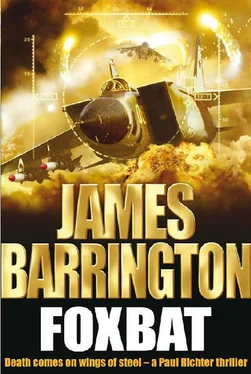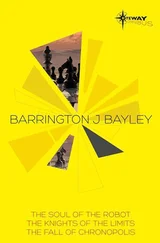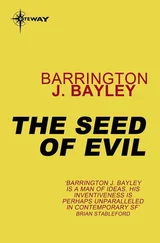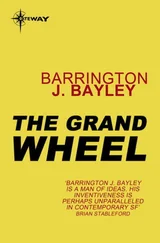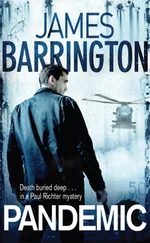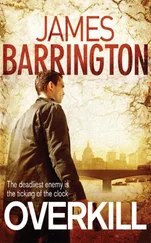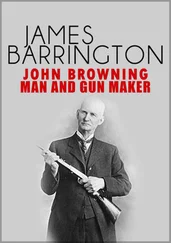He’d done all that, and he guessed that officers in charge of other missile bases on the east coast of North Korea had probably received similar orders. The American aircraft – he assumed they were American – had clearly been flying on an attack vector, but had broken off at almost exactly twelve miles range.
He suddenly remembered that twelve miles was the international limit of territorial waters. Had the Americans been trying to provoke a response, probing close to the coast and then breaking off just before infringing North Korean territory? He shook his head. No, he didn’t believe that. It was as if the pilots had suddenly been recalled, after being ordered to abort the raid.
Whatever the reason, he had to report this. And, he expected, the men in Pyongyang would not be happy with the news.
Cobra and Viper formation, Sea of Japan
‘Cobra Leader, November Alpha. No hostiles in pursuit. Most of them appear to be recovering to their bases.’
‘Roger that. Break. Cobra Two, Vipers, commence climb to thirty-five thousand feet.’
At low level the Harrier, like all high-performance jet aircraft, burned far more fuel than at altitude, where the engine worked much more efficiently. They’d dropped their external tanks less than ten minutes earlier, so conserving fuel wasn’t a priority but, as they seemed safe from pursuit, gaining height was a prudent move.
Pyongyang, North Korea
‘They must have noticed something,’ Pak Je-San insisted. ‘Something must have made those pilots realize it was a trap.’
‘Very probably,’ Kim Yong-Su agreed, ‘but exactly what happened is irrelevant. The fact remains that the fighters – and they were British, not American – turned away and didn’t continue their attack, which has put us in a very difficult position. We no longer have the justification we need to begin our operation against South Korea, and now we must decide what to do next.’
‘I would proceed as planned,’ Pak suggested. ‘Everything is in place.’
‘Fortunately, that is not your decision,’ Kim hissed. ‘I’m perfectly aware, as is the “Dear Leader”, that this was your plan, but we’ve both reminded you before that your involvement is now purely practical. We will decide all matters of strategy.’
Kim put down the phone and sat in silence for a few moments. But Pak was right: everything was in place. The only difference was that by giving the go-ahead now, North Korea would clearly be labelled the aggressor, rather than a sovereign nation defending its territory against an unprovoked attack. But would that make any difference in the long run? If their plans succeeded, the opinion of any other nation or international body would probably be irrelevant, because Korea would at last be united.
But, ultimately, the decision wasn’t his to make. He reached forward and picked up the red telephone.
Four minutes later Kim Yong-Su ended the call with a somewhat shocked expression on his face. He’d expected that the ‘Dear Leader’ would be disturbed by what he had to tell him, but he’d been completely unprepared for the screaming rage that had resulted.
He’d suggested caution, that the best option might be to try to entice the Americans or the British to carry out an attack somewhere else, or even for the North Koreans to fake an assault themselves, photographing the destruction of one of their airfields by missiles fired by their own military, and then claiming it was an act of aggression by the South Koreans. That would give them the excuse they needed to smash through the Demilitarized Zone.
The ‘Dear Leader’ had rejected this suggestion out of hand, and issued his own very specific instructions, and not for the first time Kim wondered at the man’s sanity. But an order was an order, and despite his personal misgivings, he had no doubt at all what would happen to him if he disobeyed. He sat at his desk for a few moments, collecting his thoughts, then picked up the telephone. His first call was to Pak Je-San, and he simply told him to implement Phase Two of ‘Golden Dawn’, immediately.
Then he dialled the number that gave him direct access to the commanding officer at the Chiha-ri missile base.
North Korea
North Korea’s planned assault strategy against its southern neighbour was simple, effective and comprehensive.
Western analysts believed the initial attack would probably be a form of electronic warfare, with highly trained North Korean hackers disrupting American computer-based communication links. That would be followed by assaults using the 120,000 North Korean special forces against specific American and South Korean military bases, airfields and the like. The main assault would follow, with sustained artillery barrages aimed at Seoul and other strategic targets lying close to the DMZ. And, whilst that was taking place, North Korean troops would swarm across the Demilitarized Zone through pre-prepared tunnels, dug deep underground, and emerge behind the Combined Forces Command lines. Estimates suggest there may be as many as twenty such tunnels running under the DMZ at present, some of them capable of handling up to 15,000 troops per hour.
That was the conventional view, and it was the battle plan that the Americans and South Koreans had formulated their own strategies to counter. In fact, the allied Operational Plan was simple enough in concept: the CFC forces would retreat in the face of the North Korean attack, giving ground as slowly as possible, while American reinforcements would be deployed to the south of the peninsula, and would then advance northwards, driving the attackers back.
The North Korean leadership in Pyongyang had always recognized that the main obstacle to their conquest of the South was America’s involvement. Despite their belligerent rhetoric, in a war with the United States, they knew North Korea would ultimately lose, simply because no small nation, no matter how dedicated and able its forces, can hope to defeat a superpower. The disparity in the sizes of their respective arsenals and military machines ensured this.
That was why Pak Je-San’s plan called for the flight of the Taep’o-dong missile as an essential first step, because if they could convince the Americans that their involvement in the peninsula would lead to nuclear attacks on the superpower itself, there was a very good chance that the invasion of South Korea might succeed. American public opinion would surely force the government not to react?
But Pak Je-San had an additional string to his bow. When he’d explained his overall plan to the leadership in Pyongyang, he’d emphasized that the artillery bombardment of South Korea would ultimately be counter-productive. The ideal solution would be the elimination of a large proportion of the population of the South, but not the destruction of the country’s infrastructure, and he’d therefore tailored his plan to achieve this objective.
It was to be a four-stage process. First , assemble the troops ready to cross the Demilitarized Zone, either on the ground, while supported by tanks and armour, or through the tunnels. Second , destroy the CFC’s ability to repel the invasion. Third , launch an attack using short-duration chemical weapons targeted on the major centres of population in and around Seoul. Finally , send in the occupying force.
The troops were already in position, and the chemical weapons had been assembled and prepared for use. North Korea has always designed its chemical and biological weapons to be fired from howitzers and other artillery pieces, but inevitably these are relatively small and lightweight munitions. To ensure that Seoul suffered a devastating attack that would overwhelm the South Korean government and population, Pak Je-San had planned to use Scud missiles carrying the largest available chemical warheads. Six such weapons, he had calculated, would be enough, but these could only be launched once the North Koreans were certain the American Patriot anti-missile batteries had been eliminated as a viable defence.
Читать дальше
